8 Endangered Mammals
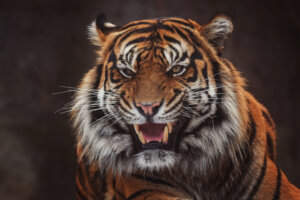

Reviewed and approved by the biologist Samuel Sanchez
There are several reasons why the number of extinct animals is increasing from day to day. Among the different animal species, 36% of mammals are in danger of extinction due to species trafficking, poaching, or the fragmentation of their ecosystems. The rest of the biological taxa don’t follow a much better rhythm. Find out about 8 endangered mammals in today’s article.
We’re in a very worrying period of history in terms of loss of diversity. Several scientists have called this stage the Holocene mass extinction, as the loss of species is 100 to 1000 times faster than expected. Here’s our list of some of these endangered mammals.
1. Black rhinoceros (Diceros bicornis)
This animal hails from the African savannas and has historically been threatened by poachers, who go after its horns. Despite being a protected species, in 2020 there were only 3,142 specimens left worldwide and its conservation status according to the International Union for Conservation of Nature – IUCN for its acronym in English – is “Critically Endangered (CR)“.
The black rhino is extremely large with a pronounced dark gray color. Its diet is based on shrubs and small trees, which the adult specimens can reach without any effort. This species differs from the white rhino in its color and in its mouth, as the black rhino’s mouth is more like a prehensile beak, ideal for its type of feeding.

2. Sumatran tiger (Panthera tigris sumatrae)
Another animal on our list of endangered mammals is the Sumantra tiger, a big cat that since 2008 has been in a “Critically Endangered” status. The cause of its population decline is poaching for the trade of its skins and the fragmentation of its natural habitat, a situation that forces this feline to confine itself in reduced areas.
The current population of Sumatran tigers is estimated to be between 450 and 500 individuals, all conserved in some nature reserves in captivity or in small areas in the wild.
Physically, we can see that their fur is darker than other species of tiger. It also has more star lines and is considered the smallest of the tigers, as its length is no more than 2.5 meters (8.2 feet). Among their skills are hunting and their ability to swim in the small rivers and ponds of the island of Sumantra in Indonesia, their natural habitat.
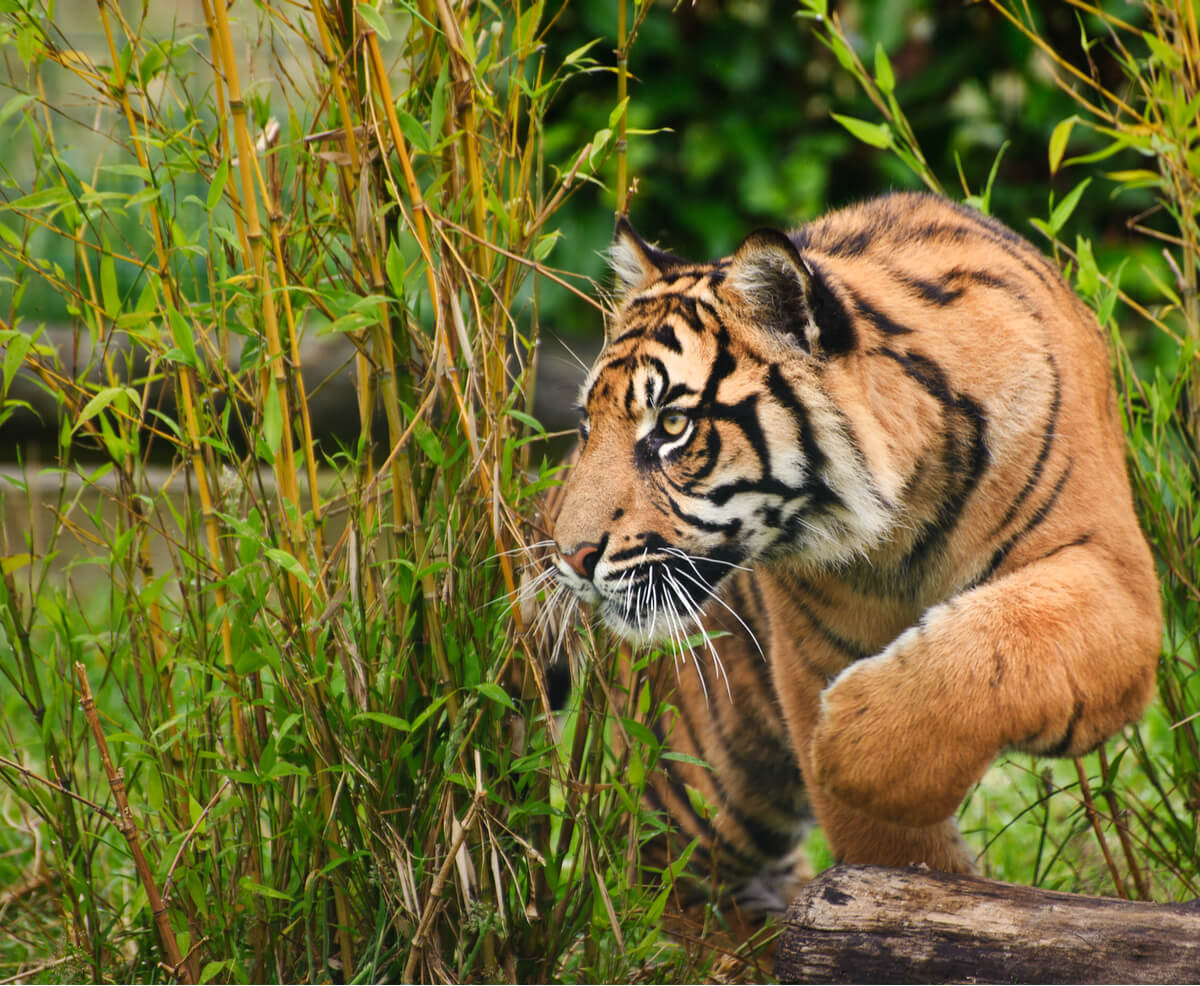
3. Pangolins
Pangolins are a genus of mammals where two of its four species are currently in critical danger of extinction. This small animal is associated with the armadillo for its ability to wrap itself around its own body to protect itself from predators in Africa and Asia, the habitats where it has been reduced to living.
The pangolin is an insectivorous mammal that doesn’t pose any danger to humans. However, it’s the most trafficked animal worldwide because its meat is highly valued on the Asian market and its scales are used to alleviate ailments – such as arthritis or asthma – in traditional medicine.
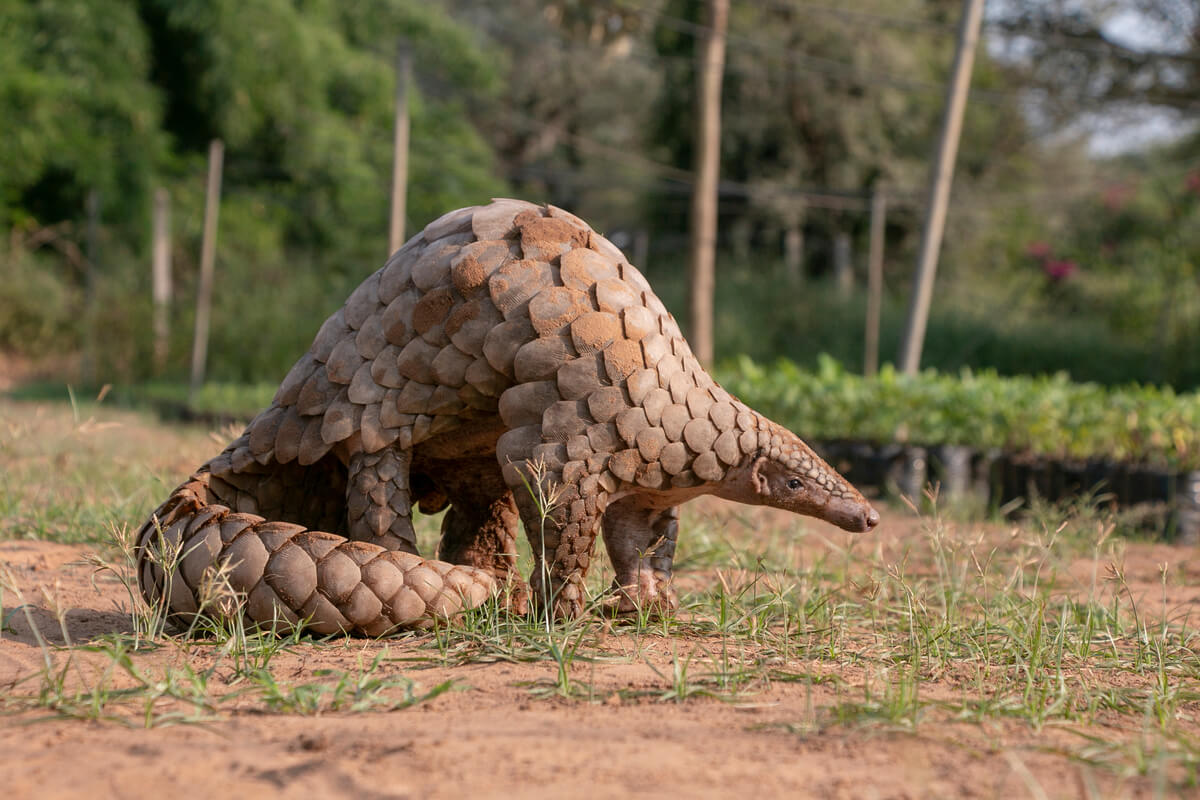
4. Mountain gorilla (Gorilla beringei beringei)
Gorillas are another mammal under threat, in this case by deforestation, poaching, and human disease. The western lowland gorilla and the mountain gorilla are two of the four gorilla subspecies that are most threatened. In 2018, there were only 600 specimens of this species left, and, according to the IUCN, its status is “endangered”.
Mountain gorillas are protected in different reserves in central Africa and their social organization is just one of their most curious aspects. Experts have observed that a single male can live with several females, although there are usually more males in the same community.
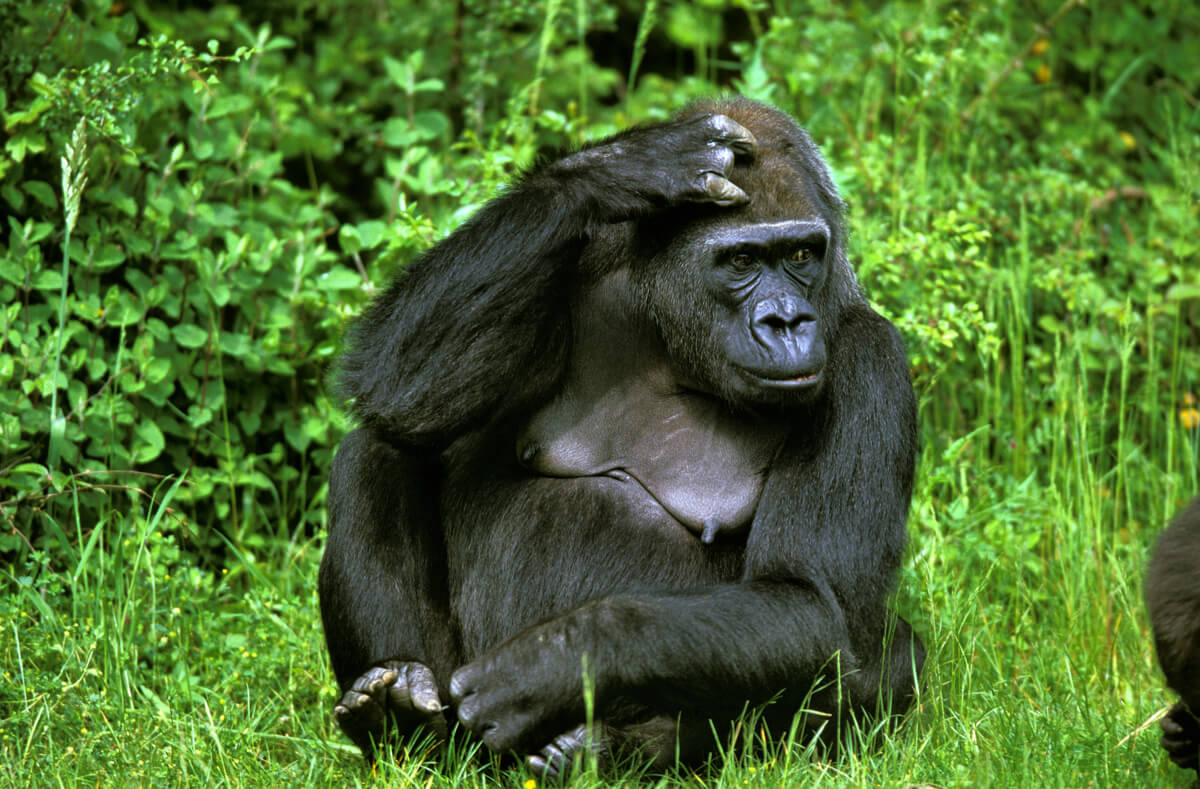
5. Pygmy hippo (Choeropsis liberiensis)
This species of hippopotamus is endemic to Africa, specifically Liberia, Nigeria and the Ivory Coast, where marshes abound. It’s a semi-aquatic mammal that, unlike the common hippopotamus, prefers to live alone or in pairs. Both go into the nearby forests at night to feed, because during the day they remain in the water to regulate their temperature.
The destruction of their habitat has reduced this animal’s number to less than 3,000. For this reason, the IUCN lists them as an “endangered” species.
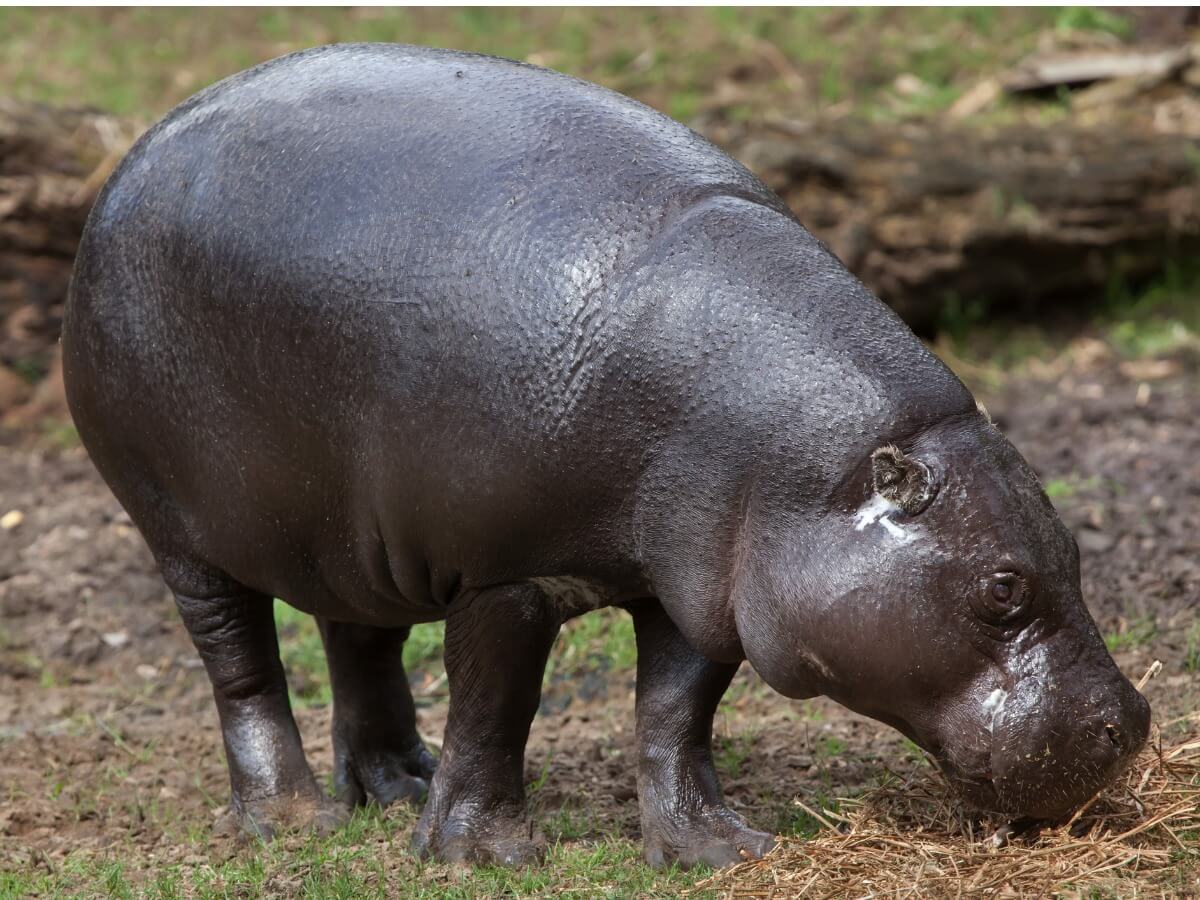
More mammals in danger of extinction (in Spain)
Like any other country, Spain is no stranger to the possible extinction of various animal species. In the case of mammals, pollution and hunting are just two of the causes that threaten their lives. Because of this, the environmental and animal movements have fought for legislation to be more severe with the crimes that threaten biological conservation.
6. Brown bear (Ursus arctos)
The brown bear has its habitat in Spain – in the Pyrenees – and in the Cantabrian Mountains. Although some investigations and state efforts have managed to increase their number, currently in the Pyrenees there are only about 50 specimens. However, recovery programs have moved the species from “endangered” to “least concern” on the listings.
In February 2016, the world population of brown bears was 110,000.
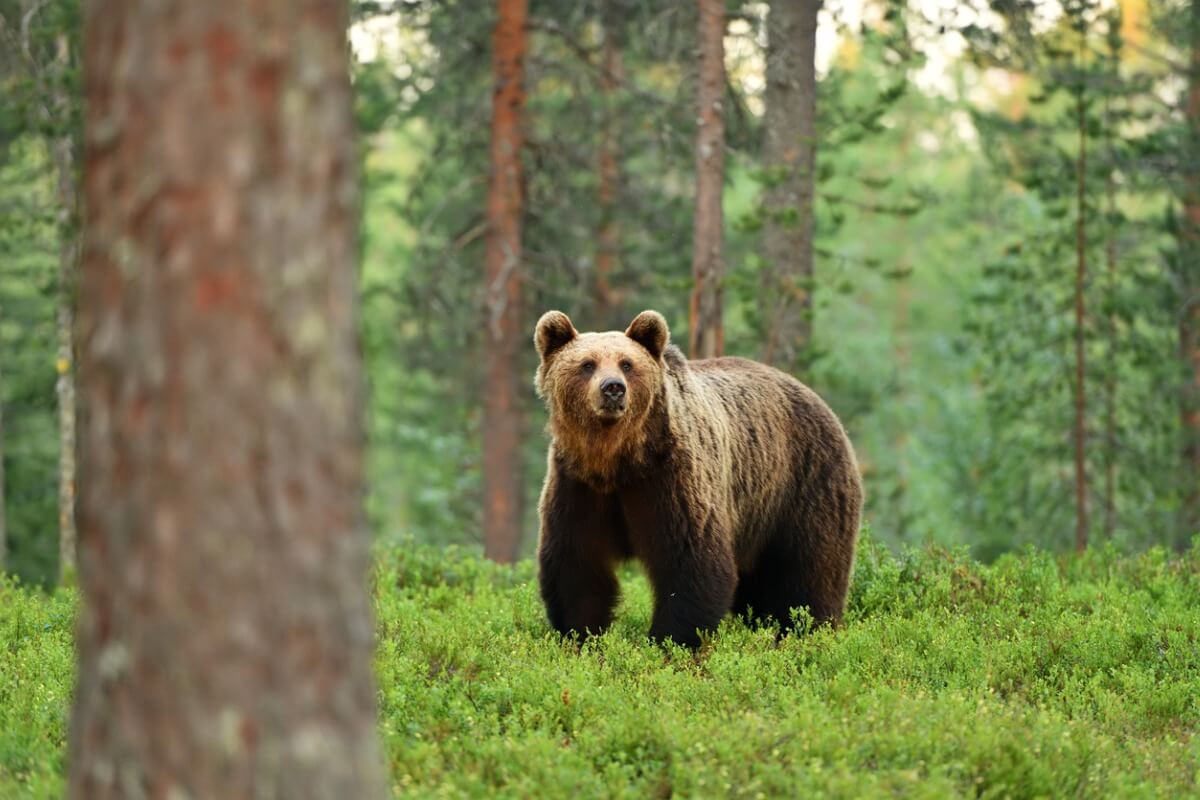
7. Iberian wolf (Canis lupus signatus)
The conservation of the Iberian wolf is a constant struggle in Spain. Several decades ago, this canid had a presence throughout the Iberian Peninsula, while today there are only 2,000 specimens north and south of the river Duero. Consequently, experts list it as a “vulnerable” species. Unfortunately, specimens are still hunted in some areas.
The main threat of the Iberian wolf are the efforts to legalize its hunting south of the river Duero, in addition to poisoning and the reduction of its natural habitat.

8. Iberian lynx (Lynx pardinus)
The Iberian lynx – a unique species in the world – is another mammal in danger of extinction due to the destruction of its habitat, car accidents, a lack of food, and hunting. Experts classify it as a species “in danger of extinction” and in the Spanish territories of Sierra Morena, Doñada, and the mountains of Toledo it moves freely, albeit with a precarious food situation closely linked to the rabbit population.
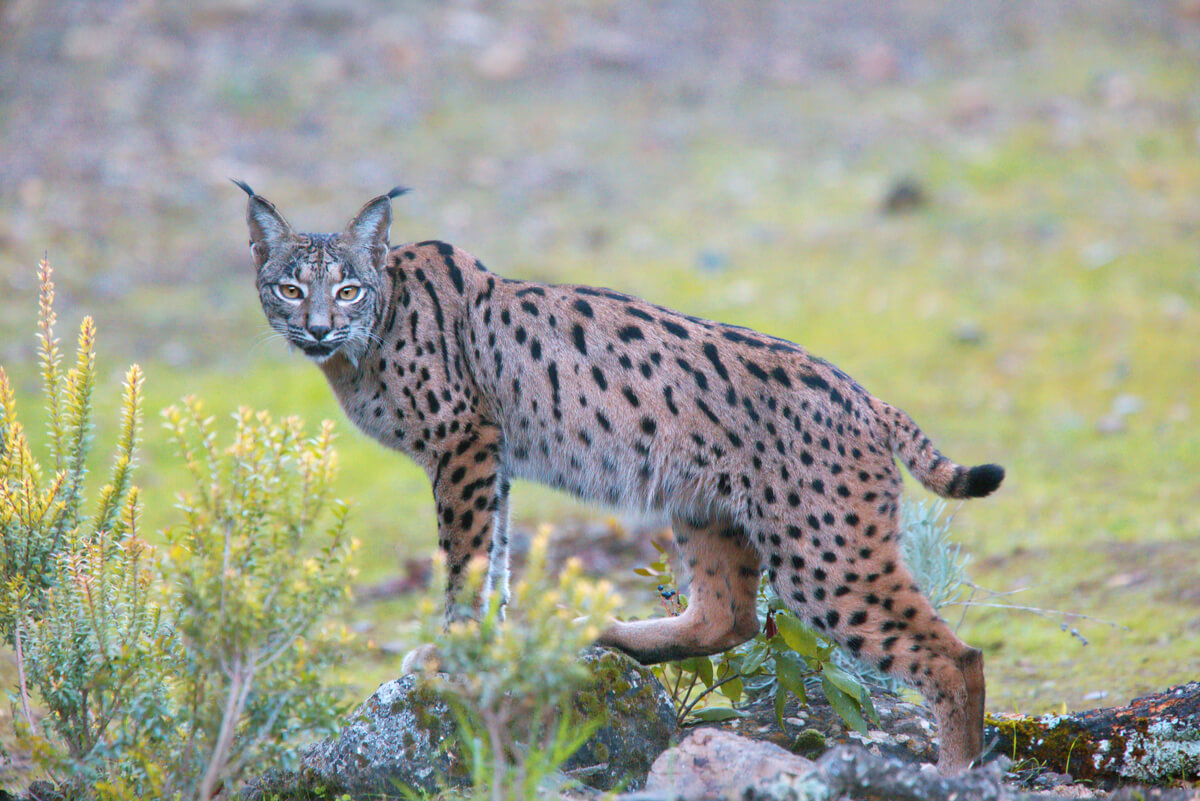
As you will have appreciated, many mammals are currently facing possible extinction. Most of the triggers of these declines are due to human beings. Because of this, it’s up to us to fight for the future of these animals and find a solution to the situation, making their natural habitats a safer place to live.
There are several reasons why the number of extinct animals is increasing from day to day. Among the different animal species, 36% of mammals are in danger of extinction due to species trafficking, poaching, or the fragmentation of their ecosystems. The rest of the biological taxa don’t follow a much better rhythm. Find out about 8 endangered mammals in today’s article.
We’re in a very worrying period of history in terms of loss of diversity. Several scientists have called this stage the Holocene mass extinction, as the loss of species is 100 to 1000 times faster than expected. Here’s our list of some of these endangered mammals.
1. Black rhinoceros (Diceros bicornis)
This animal hails from the African savannas and has historically been threatened by poachers, who go after its horns. Despite being a protected species, in 2020 there were only 3,142 specimens left worldwide and its conservation status according to the International Union for Conservation of Nature – IUCN for its acronym in English – is “Critically Endangered (CR)“.
The black rhino is extremely large with a pronounced dark gray color. Its diet is based on shrubs and small trees, which the adult specimens can reach without any effort. This species differs from the white rhino in its color and in its mouth, as the black rhino’s mouth is more like a prehensile beak, ideal for its type of feeding.

2. Sumatran tiger (Panthera tigris sumatrae)
Another animal on our list of endangered mammals is the Sumantra tiger, a big cat that since 2008 has been in a “Critically Endangered” status. The cause of its population decline is poaching for the trade of its skins and the fragmentation of its natural habitat, a situation that forces this feline to confine itself in reduced areas.
The current population of Sumatran tigers is estimated to be between 450 and 500 individuals, all conserved in some nature reserves in captivity or in small areas in the wild.
Physically, we can see that their fur is darker than other species of tiger. It also has more star lines and is considered the smallest of the tigers, as its length is no more than 2.5 meters (8.2 feet). Among their skills are hunting and their ability to swim in the small rivers and ponds of the island of Sumantra in Indonesia, their natural habitat.

3. Pangolins
Pangolins are a genus of mammals where two of its four species are currently in critical danger of extinction. This small animal is associated with the armadillo for its ability to wrap itself around its own body to protect itself from predators in Africa and Asia, the habitats where it has been reduced to living.
The pangolin is an insectivorous mammal that doesn’t pose any danger to humans. However, it’s the most trafficked animal worldwide because its meat is highly valued on the Asian market and its scales are used to alleviate ailments – such as arthritis or asthma – in traditional medicine.

4. Mountain gorilla (Gorilla beringei beringei)
Gorillas are another mammal under threat, in this case by deforestation, poaching, and human disease. The western lowland gorilla and the mountain gorilla are two of the four gorilla subspecies that are most threatened. In 2018, there were only 600 specimens of this species left, and, according to the IUCN, its status is “endangered”.
Mountain gorillas are protected in different reserves in central Africa and their social organization is just one of their most curious aspects. Experts have observed that a single male can live with several females, although there are usually more males in the same community.

5. Pygmy hippo (Choeropsis liberiensis)
This species of hippopotamus is endemic to Africa, specifically Liberia, Nigeria and the Ivory Coast, where marshes abound. It’s a semi-aquatic mammal that, unlike the common hippopotamus, prefers to live alone or in pairs. Both go into the nearby forests at night to feed, because during the day they remain in the water to regulate their temperature.
The destruction of their habitat has reduced this animal’s number to less than 3,000. For this reason, the IUCN lists them as an “endangered” species.

More mammals in danger of extinction (in Spain)
Like any other country, Spain is no stranger to the possible extinction of various animal species. In the case of mammals, pollution and hunting are just two of the causes that threaten their lives. Because of this, the environmental and animal movements have fought for legislation to be more severe with the crimes that threaten biological conservation.
6. Brown bear (Ursus arctos)
The brown bear has its habitat in Spain – in the Pyrenees – and in the Cantabrian Mountains. Although some investigations and state efforts have managed to increase their number, currently in the Pyrenees there are only about 50 specimens. However, recovery programs have moved the species from “endangered” to “least concern” on the listings.
In February 2016, the world population of brown bears was 110,000.

7. Iberian wolf (Canis lupus signatus)
The conservation of the Iberian wolf is a constant struggle in Spain. Several decades ago, this canid had a presence throughout the Iberian Peninsula, while today there are only 2,000 specimens north and south of the river Duero. Consequently, experts list it as a “vulnerable” species. Unfortunately, specimens are still hunted in some areas.
The main threat of the Iberian wolf are the efforts to legalize its hunting south of the river Duero, in addition to poisoning and the reduction of its natural habitat.

8. Iberian lynx (Lynx pardinus)
The Iberian lynx – a unique species in the world – is another mammal in danger of extinction due to the destruction of its habitat, car accidents, a lack of food, and hunting. Experts classify it as a species “in danger of extinction” and in the Spanish territories of Sierra Morena, Doñada, and the mountains of Toledo it moves freely, albeit with a precarious food situation closely linked to the rabbit population.

As you will have appreciated, many mammals are currently facing possible extinction. Most of the triggers of these declines are due to human beings. Because of this, it’s up to us to fight for the future of these animals and find a solution to the situation, making their natural habitats a safer place to live.
All cited sources were thoroughly reviewed by our team to ensure their quality, reliability, currency, and validity. The bibliography of this article was considered reliable and of academic or scientific accuracy.
- WorldWildLife. Pangolín. Recogido el 20 de junio de 2021 de: https://www.worldwildlife.org/descubre-wwf/historias/pangolin
- Lomolino, M. V., & Channell, R. (1995). Splendid isolation: patterns of geographic range collapse in endangered mammals. Journal of Mammalogy, 76(2), 335-347.
- Comizzoli, P., Songsasen, N., & Wildt, D. E. (2010). Protecting and extending fertility for females of wild and endangered mammals. Oncofertility, 87-100.
- Grimwood, I. (1968). Endangered mammals in Peru. Oryx, 9(6), 411-421.
- Azab, W., Dayaram, A., Greenwood, A. D., & Osterrieder, N. (2018). How host specific are herpesviruses? Lessons from herpesviruses infecting wild and endangered mammals. Annual review of virology, 5, 53-68.
This text is provided for informational purposes only and does not replace consultation with a professional. If in doubt, consult your specialist.








